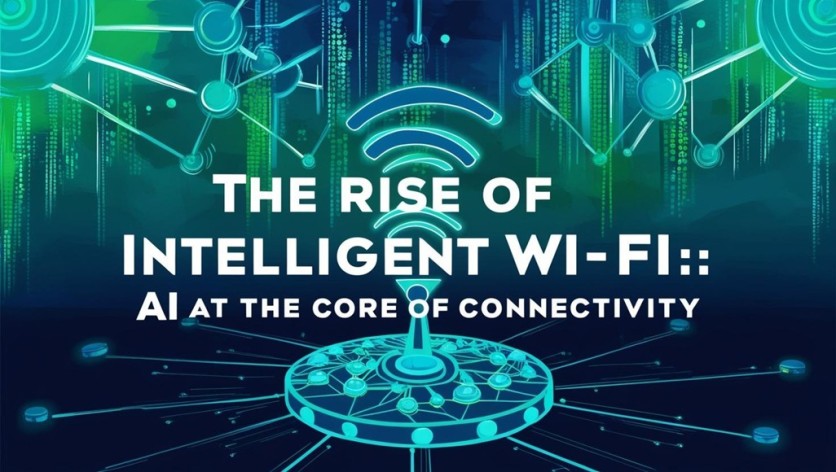
The combination of Wi-Fi and AI is driving a powerful shift across multiple industries by enabling smarter, more connected environments, says Prasad Danekula, a Principal cloud developer at HPE Aruba Networking. His statement reveals that AI-enhanced WiFi goes beyond just connectivity—it provides real-time insights, automates operations, and personalizes user experiences.
Global spending on Wi-Fi and network management systems is rapidly increasing, driven by growing connectivity needs and digital transformation across industries. In 2024, the global Wi-Fi analytics market was valued at around USD 16.7 billion and is expected to reach USD 90 billion by 2033, with a CAGR of 19.57%. With a strong foundation in wired and wireless technologies, cloud solutions, and security, he brings extensive experience in developing and architecting critical systems. His approach focuses on secure-by-design principles, ensuring that every solution is not only robust and scalable but also intuitive and aligned with modern business needs.
From Reactive to Predictive: The AI Evolution of Wi-Fi
Artificial Intelligence (AI) and Machine Learning (ML) are driving major advancements in Wi-Fi by enabling smarter, more adaptive networks. Supervised learning helps in identifying traffic patterns and predicting network congestion, while unsupervised learning detects anomalies and potential security threats. Reinforcement learning is used to optimize bandwidth allocation and dynamically adjust signal strength based on user behavior. Deep learning enhances predictive maintenance, reducing downtime by identifying potential hardware failures early. These AI techniques enable Wi-Fi systems to self-optimize, self-heal, and deliver personalized connectivity experiences.
Beyond Connectivity: How Wi-Fi 6E and 7 Are Powering Intelligent Industries
Wi-Fi 6E extends Wi-Fi 6 into the 6 GHz band, offering more channels, less interference, and faster speeds—ideal for high-density environments. Key features like OFDMA, MU-MIMO, and Target Wake Time enhance efficiency, device capacity, and battery life. Wi-Fi 7 builds on this with 320 MHz channels, Multi-Link Operation (MLO), and 4K QAM, enabling ultra-low latency and extremely high throughput. These technologies empower industries to meet rising connectivity demands. Together, Wi-Fi 6E and Wi-Fi 7 future-proof networks, ensuring high performance, scalability, and reliability.
Infrastructure Reimagined: Cloud-Driven Management Systems
Cloud-managed network systems are transforming Wi-Fi analytics by offering centralized, real-time visibility and control over wireless networks. These systems collect and analyze data from access points across multiple locations, providing detailed insights into user behavior, device performance, bandwidth usage, and network health. With built-in AI and machine learning, cloud platforms can detect anomalies, predict issues, and recommend optimizations automatically. This enables IT teams to proactively manage Wi-Fi performance, reduce downtime, and improve user experience without being on-site. Additionally, cloud dashboards offer scalable management, making it easier to monitor large or distributed networks while adapting to the growing demand for data-driven decisions.
With over 13 years of industry experience, Prasad Danekula has made significant technical contributions in wireless transformations, endpoint security, and AI-powered networking. Spearheaded the development of wireless controller services to a cloud-based microservices architecture, driving enhanced scalability, flexibility, and operational efficiency. He specializes in developing and designing solutions for Large Public Venue (LPV) deployments. Prasad has guided customers through transitions from on-premises to cloud-managed systems, improving operational efficiency and agility. He has also validated cloud microservices for performance and scalability, ensuring system reliability in dynamic environments.
The Future of Wi-Fi: AI and Robotics Enabling Hyper-Connected Environments
The future of Wi-Fi, powered by AI and robotics, promises hyper-connected, intelligent environments where machines, people, and data interact seamlessly. With ultra-fast, low-latency Wi-Fi (like Wi-Fi 7 on the horizon), robots and AI systems will communicate in real time, enabling smarter automation in industries like manufacturing, healthcare, and logistics. AI-driven networks will self-optimize and self-heal, predicting traffic demands and dynamically allocating bandwidth. In smart buildings and cities, autonomous service robots will rely on robust Wi-Fi to navigate, interact, and perform tasks. As AI continues to evolve, Wi-Fi will serve as the invisible backbone that enables intelligent decision-making and real-time coordination between humans and machines—reshaping how we live, work, and interact with technology.
In conclusion, Prasad Danekula highlights how Wi-Fi has evolved from a mere utility to a key driver in the transformation of multiple industries. It's not just about faster connections anymore—it's about creating intelligent ecosystems where infrastructure, data, and personalized services seamlessly integrate. The innovations explored provide a preview of a future where technology is not only enhancing various industries but fundamentally reshaping them.
ⓒ 2025 TECHTIMES.com All rights reserved. Do not reproduce without permission.




